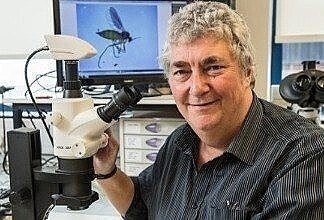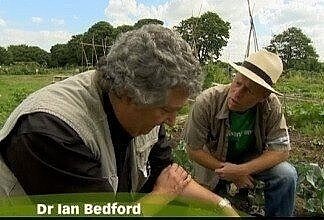
Protect your spring bulbs from the Narcissus bulb fly
Narcissus is a genus of spring-flowering bulb plants from the Amaryllis family, commonly known as daffodils. They are also known as Lent Lilies since they usually bloom during Lent, from Ash Wednesday through to Easter.
Originating from southern Europe and North Africa, narcissus bulbs have been traded globally for the past 2000 years, and whilst there are 36 recognised species, over 26,000 different cultivars are now available for people to grow in their gardens throughout the world.
From March to April each year, flowering daffodils will be a common sight in gardens across Britain and a welcome sign of spring and the warmer weather to come, but for many gardeners who look forward to seeing the daffodils bloom in their gardens each year, it can be quite disappointing and perhaps a bit baffling when the flower buds fail to appear.
Originating from southern Europe and North Africa, narcissus bulbs have been traded globally for the past 2000 years, and whilst there are 36 recognised species, over 26,000 different cultivars are now available for people to grow in their gardens throughout the world.
From March to April each year, flowering daffodils will be a common sight in gardens across Britain and a welcome sign of spring and the warmer weather to come, but for many gardeners who look forward to seeing the daffodils bloom in their gardens each year, it can be quite disappointing and perhaps a bit baffling when the flower buds fail to appear.
Why might a daffodil not produce its flowers?
Daffodils may not produce any flowers in response to detrimental soil conditions, disease, or the age of the bulb. However, it could also be a sign that the bulb is being damaged by one of the few soil-dwelling invertebrates that consume daffodil bulbs. In particular, the larvae of the Narcissus Bulb Fly (Merodon equestris).
What is the Narcissus bulb fly?
Resembling a small fluffy brown bumblebee, the narcissus bulb fly is actually a hoverfly, which are a group of flies that are renowned for mimicking the appearance of bees and wasps. However, they differ from bees and wasps by having short antennae, a pair of large eyes that cover most of their head, and a single pair of wings. Hoverflies don’t sting either.Despite being common throughout Britain wherever daffodils are grown, the narcissus bulb fly isn’t a native species, since it entered the country with imported bulbs during the late 19th century.
Their annual lifecycle begins during May when the adult bulb flies hatch from their underground pupae. They then fly off in search of nectar-rich flowers where they’ll gather to feed and mate. The females will then leave to find senescing daffodil leaves that they can land on before crawling down to lay an egg on the neck of the underground bulbs. An egg will soon hatch into a little white larvae that crawls down to the base of the bulb and burrows inside to feed on the fleshy centre. This includes consuming the following year’s flower bud which was starting to form.
By the end of the year, the larvae will be fully grown, but it’ll remain inside the bulb throughout winter, protected from the frosts. Then, as spring arrives, it exits the bulb to pupate in the soil, leaving the bulb to produce just a few final leaves before it rots and dies.
Finally, when daffodil–flowering season comes to an end and the leaves start to senesce, the adult bulb flies begin hatching from their pupae and emerging from the soil to start the next generation of narcissus bulb flies.
How to control the Narcissus bulb flies?
Controlling the problems that bulb flies can cause is not easy and there are no chemical pesticides for use in home gardens. However, it is advisable to avoid growing daffodils in the warm, shady locations that narcissus bulb flies prefer, and to remove and dispose of any non-flowering bulbs in the spring.Also, to try and block the female bulb flies from laying their eggs by firming the ground around senescing daffodil leaves from mid-May to June and covering them with insect-proof netting.

About Dr Ian Bedford
Ian has been fascinated by the bug world for as long as he can remember. From studying butterflies on the South Downs as a youngster, he went on to pursue a career in Research Entomology and ran the Entomology Dept at the John Innes Centre in Norwich up until his recent retirement.VISIT WEBSITE

'Bug of the month'
Visit our 'bug of the month' archive.
Every month Ian will share his knowledge on how to protect your plants and gardens from preventable pest invasions while providing valuable insights into the insects regularly found in our gardens.
find out more
Comments (0)
Why not be the first to send us your thoughts?
Leave A Comment
Most popular articles
1
Plastic plant pots dimensions and uses2
Peat vs Peat Free - Choosing the right Potting Compost3
How to Grow Watercress at home in plant pots4
January Jobs5
Our guide to seed sowing compost